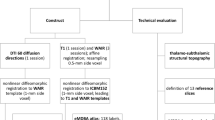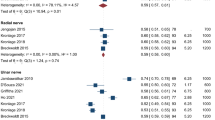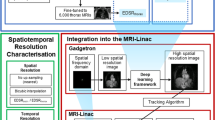Abstract
Objective
– Methods were invented that made it possible to image peripheral nerves in the body and to image neural tracts in the brain. Over a 15 year period, these techniques – MR Neurography and Diffusion Tensor Imaging – were then deployed in the clinical and research community and applied to about 50,000 patients. Within this group, about 5,000 patients having MR Neurography were carefully tracked on a prospective basis.
Method
– In the study group a uniform imaging methodology was applied and all images were reviewed and registered by referral source, clinical indication, efficacy of imaging and quality. Various classes of image findings were identified and subjected to a variety of small targeted prospective outcome studies. Those findings demonstrated to be clinically significant were then tracked in the larger clinical volume data set.
Results
– MR Neurography demonstrates mechanical distortion of nerves, hyperintensity consistent with nerve irritation, nerve swelling, discontinuity, relations of nerves to masses, and image features revealing distortion of nerve at entrapment points. These findings are often clinically relevant and warrant full consideration in the diagnostic process. They result in specific pathologic diagnoses that are comparable to electrodiagnostic testing in clinical efficacy.
Conclusions
– MR Neurography and DTI neural tract imaging have been validated as indispensable clinical diagnostic methods that provide reliable anatomical pathological information. There is no alternative diagnostic method in many situations. With the elapse of 15 years, tens of thousands of imaging studies, and hundreds of publications, these methods should no longer be considered experimental.
Similar content being viewed by others
Article PDF
Author information
Authors and Affiliations
Corresponding author
Rights and permissions
About this article
Cite this article
Filler, A. MR Neurography and Diffusion Tensor Imaging: Origins, History & Clinical Impact . Nat Prec (2009). https://doi.org/10.1038/npre.2009.2877.2
Received:
Accepted:
Published:
DOI: https://doi.org/10.1038/npre.2009.2877.2
Keywords
This article is cited by
-
Should we consider a new approach? Detecting grain deviation caused by knots within stems
Forestry Studies in China (2010)



